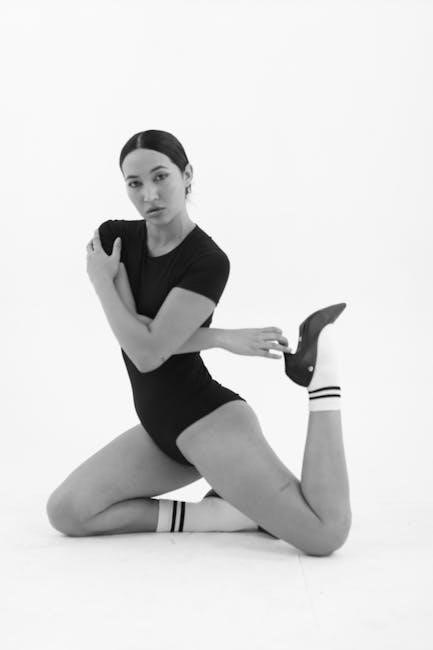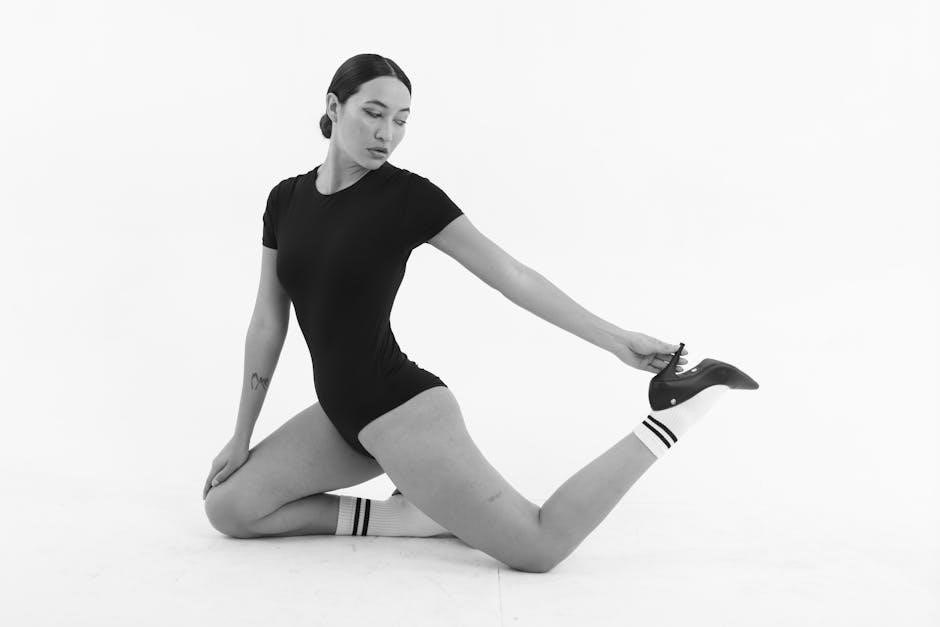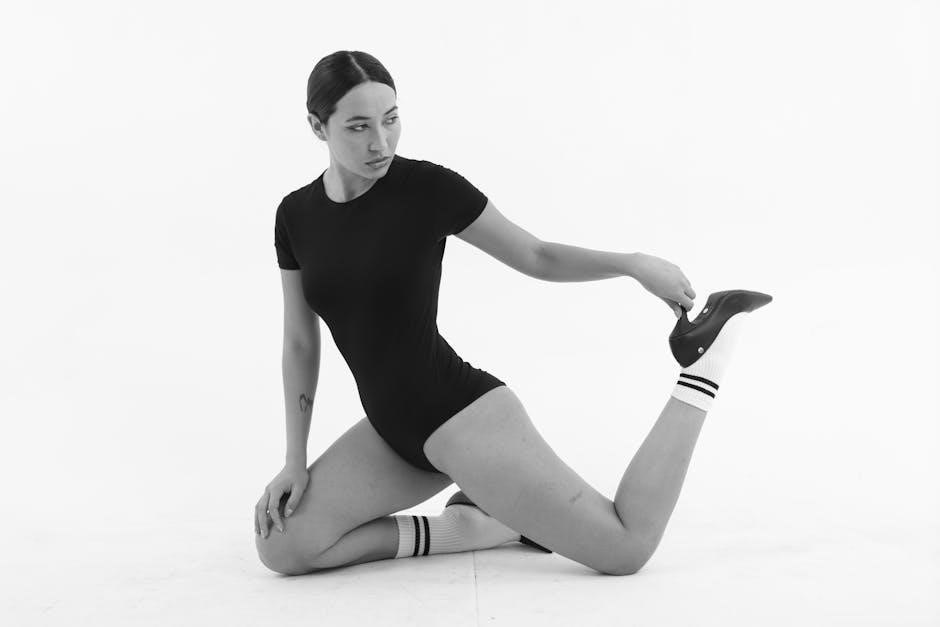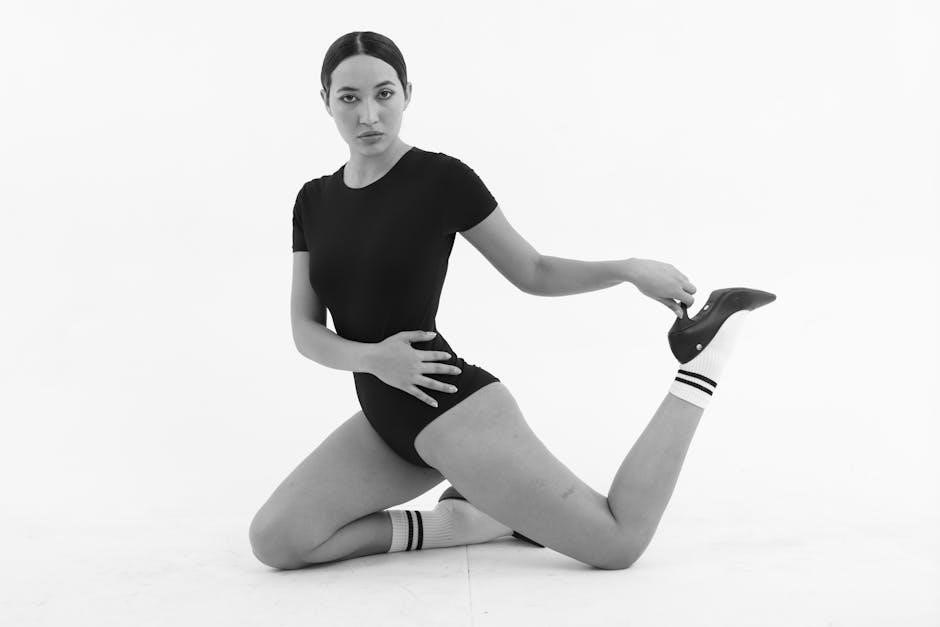Materials
When choosing socks, materials play a crucial role in comfort and durability. Natural fibers like merino wool offer breathability and moisture-wicking properties, ideal for everyday wear. Synthetic blends provide durability and are often moisture-resistant, perfect for athletic activities. For luxury, cashmere and silk offer softness and warmth, while organic cotton is eco-friendly and gentle on skin.
1.1 Natural Fibers
Natural fibers are a popular choice for socks due to their breathability and comfort. Merino wool is highly praised for its moisture-wicking properties and soft texture, making it ideal for both everyday wear and outdoor activities. Cotton is another common option, offering softness and durability, though it may lack the moisture-wicking abilities of wool. Bamboo is an eco-friendly alternative, known for its antibacterial properties and lightweight feel. Natural fibers often provide a more organic and irritation-free experience, especially for sensitive skin. They are also biodegradable, aligning with sustainable fashion trends.
1.2 Synthetic Blends
Synthetic blends are a practical choice for socks, offering durability and performance. Polyester and nylon are common materials, known for their moisture-wicking properties and resistance to wear. Spandex is often added for elasticity, ensuring a snug fit. These blends are ideal for athletic activities, as they provide excellent breathability and odor resistance. Synthetic socks are also quick-drying, making them suitable for sports and high-intensity workouts. While they may lack the natural softness of organic fibers, their performance and longevity make them a popular option for active lifestyles. They are also often more affordable than luxury materials.
1.3 Luxury Options
Luxury socks are crafted from premium materials for exceptional comfort and style. Cashmere and silk are favored for their softness and warmth, while bamboo offers natural breathability and antibacterial properties. These materials are often blended with other fibers to enhance durability without sacrificing comfort. Luxury socks frequently feature intricate stitching or subtle patterns, making them a stylish addition to formal or casual outfits. They are ideal for special occasions or as a treat for everyday wear, combining elegance with performance. Brands like Bresciani and Darn Tough offer high-quality options in this category.

Thickness and Weight
Choose the right thickness and weight for your needs. Thin socks offer breathability, midweight provide versatility, and thick socks deliver warmth and durability for various activities.
2.1 Thin Socks
Thin socks are ideal for warm weather or activities requiring breathability. They are lightweight, moisture-wicking, and prevent blisters. Perfect for sports, they keep feet cool and dry.
- Opt for synthetic or natural blends like merino wool.
- Thin socks are great for everyday wear or casual outfits.
- They are also suitable for tight-fitting shoes.
Choose thin socks for comfort and versatility in various conditions.
2.2 Midweight Socks

Midweight socks strike a balance between warmth and breathability, making them versatile for everyday wear or outdoor activities. They are thicker than thin socks but not as bulky as heavy ones, offering excellent comfort and support.
- Ideal for cooler weather or layering with shoes.
- Popular for hiking, sports, and casual use.
- Materials like merino wool or synthetic blends provide durability and moisture-wicking properties.
Midweight socks are a practical choice for those seeking comfort without sacrificing performance, suitable for a wide range of activities and conditions.
2.3 Thick and Heavy Socks
Thick and heavy socks are designed for maximum warmth and durability, ideal for cold weather or high-intensity outdoor activities. Made from robust materials like thick wool blends or heavy synthetic insulation, these socks provide excellent cushioning and support.
- Perfect for skiing, hiking, or extreme cold conditions.
- Often feature reinforced toes and heels for added durability.
- Moisture-wicking properties help keep feet dry despite heavy use.
While bulkier, they offer unparalleled comfort and protection in harsh environments, making them a necessity for winter sports enthusiasts or those working outdoors.

Activity-Specific Socks
Activity-specific socks are tailored for particular uses, ensuring optimal performance. Everyday wear focuses on comfort and breathability, while sports socks emphasize moisture-wicking and cushioning. Outdoor socks prioritize durability and warmth.
3.1 Everyday Wear
For everyday wear, prioritize comfort and practicality. Opt for breathable materials like cotton or merino wool, which regulate moisture and prevent odor. Midweight socks are ideal, offering durability without bulk. Ensure a snug fit to avoid blisters, but avoid tightness that restricts movement. Neutral colors and simple designs blend seamlessly with casual outfits. Consider seamless options for added comfort and reduced irritation. Moisture-wicking properties are a plus for active days. Pairing the right sock with your lifestyle ensures all-day comfort and versatility, making everyday wear both functional and enjoyable.
3.2 Sports and Athletics
For sports and athletics, prioritize moisture-wicking and breathable materials like merino wool or synthetic blends to keep feet dry and cool. Look for compression zones to improve blood flow and reduce fatigue. Thicker cushioning in high-impact areas, such as the heel and ball, enhances comfort during intense activities. Seamless construction minimizes blisters, while elastic arch support ensures a secure fit. Anti-odor technologies are essential for prolonged use. Choose socks designed for your specific sport, as features like ankle stability or Achilles support can vary. Proper athletic socks enhance performance and prevent discomfort during rigorous training or competition.
3.3 Hiking and Outdoor Activities
For hiking and outdoor activities, durability and moisture-wicking properties are essential. Opt for merino wool or synthetic blends that provide breathability and insulation. Thicker socks with reinforced cushioning in high-impact areas, such as the heel and toe, reduce blisters. Look for seamless construction to prevent chafing and elastic arch support for stability. Moisture-resistant materials are crucial for wet conditions. Consider midweight to heavy socks for colder weather and lightweight options for warmer days. Socks with antimicrobial treatment help reduce odor during long treks. Choose styles designed for your activity, whether hiking, backpacking, or trail running, to ensure optimal comfort and performance.

Fit and Comfort
Proper fit ensures optimal comfort. Seamless construction and stretch materials prevent chafing, while cushioning and arch support enhance durability. The right fit reduces blisters and ensures a snug feel.
4.1 Correct Size
Choosing the correct size is essential for comfort and functionality. Socks that are too tight can restrict circulation, while those too loose may bunch up and cause blisters. Always try socks in the afternoon or evening, as feet tend to swell during the day. Ensure the toe box allows wiggle room and the heel fits snugly without slipping. Proper fit prevents discomfort and ensures optimal performance, whether for sports, hiking, or everyday wear. Ill-fitting socks can lead to discomfort and reduced durability, making size selection a critical step in your purchase decision.
4.2 Sock Height
Sock height plays a significant role in comfort and practicality, depending on the activity and shoe type. No-show socks are ideal for sneakers, while ankle socks offer minimal coverage for casual wear. Crew socks, reaching mid-calf, are versatile for everyday use and sports. Knee-high socks provide warmth and support, perfect for colder conditions or specific sports like cycling. Compression socks, often taller, aid in blood flow for medical or athletic needs. Choosing the right height ensures proper fit with footwear and enhances comfort during wear. Sock height should align with the intended use to maximize performance and personal style. Always consider activity demands when selecting.
4.3 Seamless and Stretch
Seamless and stretch features are key for comfort and flexibility in socks. Seamless construction eliminates chafing and irritation, making it ideal for sensitive skin or high-impact activities. Stretch materials, like elastane or spandex, provide a snug fit and allow natural movement. These features ensure socks stay in place without restricting mobility. For sports or everyday wear, stretch enhances durability and prevents sagging. Look for seamless options if you prioritize comfort, and opt for stretch if you need a dynamic fit. Combining both ensures a sock that feels tailored to your foot, offering support and freedom for any activity or occasion.

Top Brands
Leading brands like Bombas, Darn Tough, and Uniqlo offer high-quality socks. Bombas excels in comfort, while Darn Tough is known for durability. Uniqlo provides affordable, stylish options. GQ recommends these brands for their superior quality and versatility, catering to both everyday wear and specialized needs.
5.1 Premium Brands
Premium brands like Bombas, Darn Tough, and Bresciani offer exceptional quality and craftsmanship. Bombas is renowned for its ultra-comfortable designs and charitable initiatives, while Darn Tough guarantees durability with its lifetime warranty. Bresciani, an Italian label, specializes in luxurious materials like cashmere and silk, blending elegance with comfort. These brands cater to discerning consumers seeking superior performance, style, and longevity. Their attention to detail and use of high-end materials make them stand out in the market, providing a perfect blend of luxury and practicality for everyday wear or special occasions.
5.2 Budget-Friendly Options
Affordable yet high-quality options include brands like Uniqlo, Hanes, and Gildan. Uniqlo offers colorful, breathable socks at unbeatable prices, while Hanes provides soft, durable choices for everyday wear. Gildan is known for its variety of styles and sizes, catering to both casual and athletic needs. These brands deliver comfort and practicality without compromising on quality, making them ideal for those seeking value for money. Their extensive ranges ensure there’s something for everyone, whether for work, sports, or leisure, all at accessible price points.

Sustainability
Opt for eco-friendly materials like organic cotton, bamboo, or recycled fibers. Seek brands prioritizing ethical production to minimize environmental impact while ensuring fair labor practices and sustainable manufacturing.
6.1 Eco-Friendly Materials
Eco-friendly materials are a top priority for sustainable sock shopping. Organic cotton is grown without harmful pesticides, making it gentler on the environment and skin. Bamboo fibers are renewable and require fewer resources to produce. Recycled materials, such as repurposed polyester, reduce waste and conserve resources. Additionally, merino wool from ethically raised sheep supports eco-conscious practices. Look for certifications like GOTS or OEKO-TEX to ensure sustainable and responsibly sourced materials. Choosing these options helps minimize your environmental footprint while maintaining comfort and quality.
6.2 Ethical Production
When considering ethical production, focus on fair labor practices and safe working conditions. Look for brands that ensure workers receive fair wages and have a safe environment. Ethical production also involves minimizing environmental impact through sustainable methods. Certifications like Fair Trade can guarantee these standards. Transparent supply chains and commitments to social responsibility are key. Supporting brands with ethical production helps promote better working conditions and sustainable practices in the industry. By choosing ethically produced socks, consumers contribute to a more equitable and environmentally conscious market, making a positive impact with their purchases.